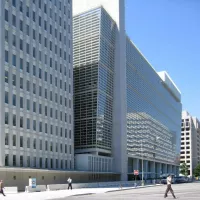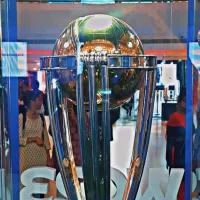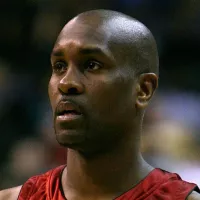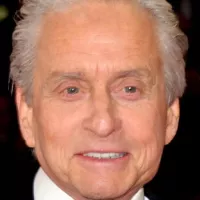India, officially the Republic of India, is a South Asian country. It is the seventh-largest country by area and the most populous globally since 2023, also being the world's most populous democracy since its independence in 1947. It is bordered by the Indian Ocean, Arabian Sea, and Bay of Bengal, sharing land borders with Pakistan, China, Nepal, Bhutan, Bangladesh, and Myanmar. In the Indian Ocean, India is near Sri Lanka and the Maldives, with its Andaman and Nicobar Islands sharing maritime borders with Myanmar, Thailand, and Indonesia.
1900: Decline of Indus Valley Civilisation
Around 1900 BCE, the Indus Valley Civilisation declined after flourishing during 2500–1900 BCE.
1901: Rise in temperatures
Between 1901 and 2018, temperatures in India have risen by 0.7 °C (1.3 °F).
1911: Primary Schools in 1911
According to Latika Chaudhary, in 1911 there were under three primary schools for every ten villages.
1920: Nonviolent resistance begins
After 1920, the nationalist movement in India became noted for nonviolent resistance, which was a primary factor in ending British rule.
1921: Literacy Rates in 1921
In 1921, the literacy rates in India were 7% overall, with 12% for men and 2% for women.
1928: Excavation of Pashupati seal in 1928-29
The Pashupati seal, was excavated in Mohenjo-daro, Pakistan, in 1928–29.
1935: Government of India Act
In 1935, the Government of India Act was used as a model and framework for the Constitution of India, with long passages from the Act being included.
1935: Establishment of National Parks and Protected Areas
In 1935, the system of national parks and protected areas was first established in India.
1946: Drafting of the Constitution
In 1946, the Constituent Assembly of India began drafting the Constitution of India, working with speed and precision until 1949.
1947: Independence and Partition of India
In 1947, India achieved independence, which was tempered by the partition of India into two states: India and Pakistan.
1947: Independence of India
In 1947, India gained independence, becoming the world's most populous democracy since then, bounded by the Indian Ocean, Arabian Sea, and Bay of Bengal, sharing borders with Pakistan, China, Nepal, Bhutan, Bangladesh, and Myanmar. Also in 1947, the British Indian Empire was partitioned into two independent dominions, a Hindu-majority dominion of India and a Muslim-majority dominion of Pakistan, accompanied by significant loss of life and migration.
1947: Partition of 1947
The popularity of tandoori chicken dates to the 1950s, and was caused in large part by an entrepreneurial response among people from the Punjab who had been displaced by the 1947 partition.
1949: Completion of the Constitution
Between 1946 and 1949, the Constitution of India was drafted by the Constituent Assembly, transforming India into a republic within the Commonwealth upon its promulgation.
1950: Multi-party system
From 1950 to the late 1980s, Congress held a majority in India's parliament.
1950: India Becomes a Republic
In 1950, India became a republic within the Commonwealth of Nations and strongly supported decolonisation in Africa and Asia.
1950: Adoption of the Constitution
In 1950, India's constitution was completed, establishing a secular and democratic republic.
1950: Abolition of Untouchability in 1950
India abolished untouchability in 1950 with the adoption of the constitution.
1951: Population and economic statistics in 1951
In 1951, India's population was 361 million, its per capita income was US$64 annually, and its literacy rate was 16.6%.
1951: First Post-Colonial Census
In 1951, the first post-colonial census in India counted 361 million people.
1951: Literacy Rates in 1951
In 1951, the literacy rates in India were 18% overall, with 27% for men and 9% for women.
1951: Congress victory in general election
In the general elections in 1951, the Congress, led by Jawaharlal Nehru, won easy victories.
1956: States Reorganisation Act
In 1956, under the States Reorganisation Act, Indian states were reorganised on a linguistic basis.
1957: Congress victory in general election
In the general elections in 1957, the Congress, led by Jawaharlal Nehru, won easy victories.
1957: Jawaharlal Nehru Prime Minister
Manmohan Singh became the first prime minister since Jawaharlal Nehru in 1957 and 1962 to be re-elected to a consecutive five-year term.
1962: Congress victory in general election
In the general elections in 1962, the Congress, led by Jawaharlal Nehru, won easy victories.
1962: Jawaharlal Nehru Prime Minister
Manmohan Singh became the first prime minister since Jawaharlal Nehru in 1957 and 1962 to be re-elected to a consecutive five-year term.
1964: China's Nuclear Test
China's nuclear test in 1964 caused India to consider producing nuclear weapons.
1964: Lal Bahadur Shastri becomes prime minister
On Nehru's death in 1964, Lal Bahadur Shastri briefly became prime minister.
1965: War with Pakistan
In 1965, India and Pakistan engaged in another war, fought over the disputed territory of Kashmir.
1966: Indira Gandhi becomes prime minister
In 1966, Lal Bahadur Shastri was succeeded by Nehru's daughter Indira Gandhi, who led the Congress to election victories in 1967 and 1971.
1967: Repelling Chinese Attack
In 1967, India successfully repelled a Chinese attack, following an initial military defeat in 1962.
1967: Congress wins election
In 1967, Indira Gandhi led the Congress to election victories.
1970: Life Expectancy in 1970-1975
Between 1970 and 1975, the life expectancy at birth in India was 49.7 years.
1971: War with Pakistan Over Bangladesh Independence
In 1971, India and Pakistan engaged in a war that followed India's support for the independence of Bangladesh.
1971: Congress wins election
In 1971, Indira Gandhi led the Congress to election victories.
1972: Enactment of the Wildlife Protection Act and Project Tiger
In 1972, India enacted the Wildlife Protection Act and Project Tiger to safeguard crucial wilderness.
1974: First Nuclear Weapons Test
In 1974, India conducted its first nuclear weapons test.
1975: Life Expectancy in 1970-1975
Between 1970 and 1975, the life expectancy at birth in India was 49.7 years.
1975: State of Emergency declared by Indira Gandhi
Following public discontent with the state of emergency Indira Gandhi had declared in 1975, the Congress was voted out of power in 1977; Janata Party, which had opposed the emergency, was voted in.
1977: Congress voted out of power
In 1977, the Congress was voted out of power; Janata Party was voted in.
1980: Congress returned to power
After the Congress was returned to power in 1980, Indira Gandhi was assassinated and succeeded by Rajiv Gandhi, who won comfortably in the elections later that year.
1980: Enactment of the Forest Conservation Act
In 1980, the Forest Conservation Act was enacted.
1981: Poverty Levels in India
In 1981, 60% of people in India were living below the World Bank's international poverty line of US$1.25 per day.
1981: Literacy Rates in 1981
In 1981, the literacy rates in India were 41% overall, with 53% for men and 29% for women.
1984: BJP Win
In the 2014 general election, the BJP became the first political party since 1984 to win an absolute majority.
1985: External Trade in GDP
In 1985, the share of external trade in India's GDP stood at 6%.
1985: Indians Leaving Poverty
Since 1985, approximately 431 million Indians have left poverty.
1988: Amendments to the Forest Conservation Act
In 1988, amendments were added to the Forest Conservation Act.
1989: National Front coalition wins election
A National Front coalition led by the Janata Dal in alliance with the Left Front won the 1989 elections.
1991: Population Growth
Between 1991 and 2001, India's population grew by 21.54%.
1991: Growth in Urban Population
Between 1991 and 2001, the number of people living in urban areas in India grew by 31.2%.
1991: Economic Liberalisation
In 1991, an acute balance of payments crisis forced India to liberalise its economy, moving towards a free-market system.
1991: Congress forms minority government
In the 1991 Indian general election, the Congress, as the largest single party, formed a minority government led by P. V. Narasimha Rao.
1991: Nominal GDP Per Capita
India's nominal GDP per capita increased steadily from US$308 in 1991, when economic liberalisation began, to US$1,380 in 2010.
1994: Under-Five Mortality Rate in 1994
In 1994, the under-five mortality rate in India was 113 per 1,000 live births.
January 1995: Member of World Trade Organization
On January 1, 1995, India became a member of the World Trade Organization.
1996: BJP forms government briefly
After the 1996 Indian general election, the BJP formed a government briefly, followed by United Front coalitions.
1998: Additional Nuclear Testing
In 1998, India carried out additional underground nuclear testing, following the initial test in 1974.
1998: BJP forms NDA coalition
In 1998, the BJP formed a coalition—the National Democratic Alliance (NDA).
1999: War with Pakistan
In 1999, India and Pakistan engaged in another war, with three of the four wars between the two countries fought over the disputed territory of Kashmir.
2000: Transition to the Iron Age
During the period 2000–500 BCE, many regions of the subcontinent transitioned from the Chalcolithic cultures to the Iron Age.
2001: Child Labour Census
According to the 2001 census, there were 12.6 million child labourers in India.
2001: Contribution of Petrochemical and Engineering Goods to Exports
Between 2001 and 2011, the contribution of petrochemical and engineering goods to total exports grew from 14% to 42%.
2001: Population Growth
From 2001 to 2011, India's population grew by 17.64%, compared to 21.54% growth in the previous decade (1991–2001).
2001: Urban and Rural Population
In 2001, over 70% of people in India lived in rural areas.
2001: Rural-urban literacy gap in 2001
In 2001, the rural-urban literacy gap in India was 21.2 percentage points.
2004: Congress emerges as largest party
In the 2004 Indian general elections, the Congress emerged as the largest single party, forming another successful coalition: the United Progressive Alliance (UPA).
2005: Poverty Levels in India
In 2005, 42% of people in India were living below the World Bank's international poverty line of US$1.25 per day.
2006: Poverty Levels in India
In 2006, India contained the largest number of people living below the World Bank's international poverty line of US$1.25 per day.
2006: External Trade in GDP
In 2006, the share of external trade in India's GDP stood at 24%, up from 6% in 1985.
2007: Economic Growth Rate
Averaging an economic growth rate of 7.5% for several years before 2007, India more than doubled its hourly wage rates during the first decade of the 21st century.
2007: Economic Disparity Between States
In 2007, the per-capita net state domestic product of the richest states in India was 3.2 times that of the poorest.
2007: Viswanathan Anand became Chess World Champion in 2007
Viswanathan Anand became the undisputed Chess World Champion in 2007.
2008: Growth in Automotive Exports
During 2008–2009, the Indian automotive industry increased exports by 36%.
2008: Civilian Nuclear Agreement with the United States
In 2008, India and the United States signed a civilian nuclear agreement, ending restrictions on India's nuclear technology and commerce despite India not being a party to the Nuclear Non-Proliferation Treaty.
2008: India's Share of World Trade
In 2008, India's share of world trade was 1.7%.
2009: Growth in Automotive Industry
During 2009–2010, the Indian automotive industry increased domestic sales by 26%.
2009: UPA returns to power
The UPA returned to power in the 2009 general election with increased numbers.
2010: Growth in Automotive Industry
During 2009–2010, the Indian automotive industry increased domestic sales by 26%.
2010: Nominal GDP Per Capita
In 2010, India's nominal GDP per capita was US$1,380.
2011: Child Labour Census
According to the 2011 census, there were 10.1 million child labourers in India, a decline of 2.6 million from 2001.
2011: Indian IT Industry
At the end of 2011, the Indian IT industry employed 2.8 million professionals, generated revenues close to US$100 billion equalling 7.5% of Indian GDP, and contributed 26% of India's merchandise exports.
2011: Contribution of Petrochemical and Engineering Goods to Exports
Between 2001 and 2011, the contribution of petrochemical and engineering goods to total exports grew from 14% to 42%.
2011: GDP Growth Rate
Between 2011 and 2012, India's average annual GDP growth rate reached 6.1%, marking it as one of the world's fastest-growing economies.
2011: Urbanisation Increase
In 2011, the level of urbanisation in India increased from 27.81% in the 2001 census to 31.16%.
2011: Literacy Rate in 2011
In 2011, the literacy rate in India was 74.04%, with 65.46% among females and 82.14% among males. The rural-urban literacy gap was 16.1 percentage points. Kerala had the highest literacy rate at 93.91%, while Bihar had the lowest at 63.82%.
2011: Poverty Levels in India
In 2011, the poverty rate in India was between 21% and 22.5% under the World Bank's revised poverty line.
2012: GDP Growth Rate
Between 2011 and 2012, India's average annual GDP growth rate reached 6.1%, marking it as one of the world's fastest-growing economies.
2012: Growth in Indian Biotech Industry
In 2012, the Indian biotech industry grew by 15.1%, increasing revenues to ₹235.24 billion by June 2013.
June 2013: Indian Biotech Industry Revenue
The Indian biotech industry grew by 15.1% in 2012–2013, increasing its revenues from ₹204.4 billion (Indian rupees) to ₹235.24 billion (US$3.94 billion at June 2013 exchange rates).
2013: Textile Exports
In the 2013 calendar year, India was the world's second-largest textile exporter after China.
2013: Viswanathan Anand holds Chess World Champion status until 2013
Viswanathan Anand held the status of Chess World Champion until 2013.
May 2014: Narendra Modi becomes Prime Minister
Since 26 May 2014, Narendra Modi has served as the prime minister of India.
2014: Corruption Perception Index Ranking
According to the Corruption Perceptions Index, India ranked 85th out of 180 countries in 2014.
2014: Child Undernourishment
In 2014, 30.7% of India's children under the age of five were underweight.
2014: Number of missing women in 2014
The number of missing women in India quadrupled from 15 million to 63 million in the 50 years ending in 2014.
2015: Undernourishment Levels
According to a Food and Agriculture Organization report in 2015, 15% of the population in India was undernourished.
2016: India's Arms Imports
Between 2016 and 2020, India was the world's second-largest arms importer, accounting for 9.5% of total global arms imports.
2017: Indian Labour Force Size
As of 2017, the Indian labour force, comprising 522 million workers, was the world's second largest.
2017: Deaths due to air pollution in 2017
In 2017, air pollution killed 1.24 million Indians.
2018: Modern Slavery Estimate
A 2018 Walk Free Foundation report estimated that nearly 8 million people in India were living in different forms of modern slavery.
2018: Corruption Perception Index Ranking
According to the Corruption Perceptions Index, India ranked 78th out of 180 countries in 2018.
2018: Temperature Increase
Between 1901 and 2018, temperatures in India have risen by 0.7 °C (1.3 °F).
2018: Leading cause of death in 2018
In 2018 chronic obstructive pulmonary disease was the leading cause of death after heart disease.
2018: Under-Five Mortality Rate in 2018
In 2018, the under-five mortality rate in India decreased to 41.1 per 1,000 live births.
2019: Poverty Levels in India
In 2019, the poverty estimates in India had decreased to 10.2%.
2019: BJP regains majority
In the 2019 general election, the BJP regained an absolute majority.
2020: India's Arms Imports
Between 2016 and 2020, India was the world's second-largest arms importer, accounting for 9.5% of total global arms imports.
2020: Median Age
In 2020, the median age in India was 28.7.
2021: India's World Trade Ranking
In 2021, India was the world's ninth-largest importer and the sixteenth-largest exporter.
2022: Increased Defence Expenditure
For the fiscal year 2022–23, India's defence expenditure was pegged at US$70.12 billion, reflecting a 9.8% increase from the previous fiscal year.
2022: Vehicle Market Size
In 2022, India became the world's third-largest vehicle market after China and the United States, surpassing Japan.
2022: Foreign Exchange Remittances
In 2022, India's foreign exchange remittances reached US$100 billion, the highest in the world, contributed by 32 million Indians working in foreign countries.
2022: Tuberculosis Rates in 2022
In 2022, the World Health Organization (WHO) estimated 2.8 million new tuberculosis infections annually in India, accounting for 26% of the global total.
2023: Population reaches over 1.4 billion
By 2023, India's population had grown to over 1.4 billion, with a nominal per capita income of US$2,601 and a literacy rate of 74%.
2023: India becomes the most populous country
In 2023, India became the most populous country in the world.
2023: Population of India
In 2023, India had an estimated 1,428,627,663 residents, making it the world's most populous country.
2023: Life Expectancy in 2023
In 2023, the life expectancy at birth in India increased to 72.0 years.
2024: Consumer Market Size
In 2024, India's consumer market was the world's third largest.
2024: Indian Economy Size
In 2024, the Indian economy was nominally worth $3.94 trillion, making it the fifth-largest economy by market exchange rates and the third-largest by purchasing power parity (PPP) at around $15.0 trillion.
2024: BJP-led NDA coalition forms government
In the 2024 general election, a BJP-led NDA coalition formed the government.
2026: Projected GDP per capita
It is expected to grow to US$3,264 by 2026.
2030: Projected Middle Class Size
By 2030, India's middle classes are projected to number around 580 million.
Mentioned in this timeline
China officially the People's Republic of China PRC is an...

The World Bank is an international financial institution offering loans...

The ICC Men's Cricket World Cup is a quadrennial international...

A dictionary is a reference work containing lexemes from one...
Pakistan officially the Islamic Republic of Pakistan is a South...
The Maldives officially the Republic of Maldives is an archipelagic...
Trending

Simon Cowell is a prominent English television personality and businessman recognized for his role as a judge on various talent...

7 months ago Gary Payton Reflects on Jordan Matchup and Hypothetical Stats in Today's NBA

11 days ago Spurs Defeat Nuggets in Thrilling Game, Mavericks Face Nuggets

22 days ago Michael Douglas and Catherine Zeta-Jones Celebrate 25 Years of Marriage with Throwbacks
Luke Kornet is an American professional basketball player currently playing for the San Antonio Spurs in the NBA He's a...

6 months ago Jack Black's Minecraft Movie Sets Premiere on HBO Max, June 20, 2025
Popular

Candace Owens is an American conservative political commentator and author...

Ilhan Omar is an American politician currently serving as the...

XXXTentacion born Jahseh Dwayne Ricardo Onfroy was a controversial yet...

Tom Cotton is an American politician and Army veteran currently...
The Kennedy Center Honors are annual awards recognizing individuals and...

Kelsey Grammer is an accomplished American actor producer and singer...